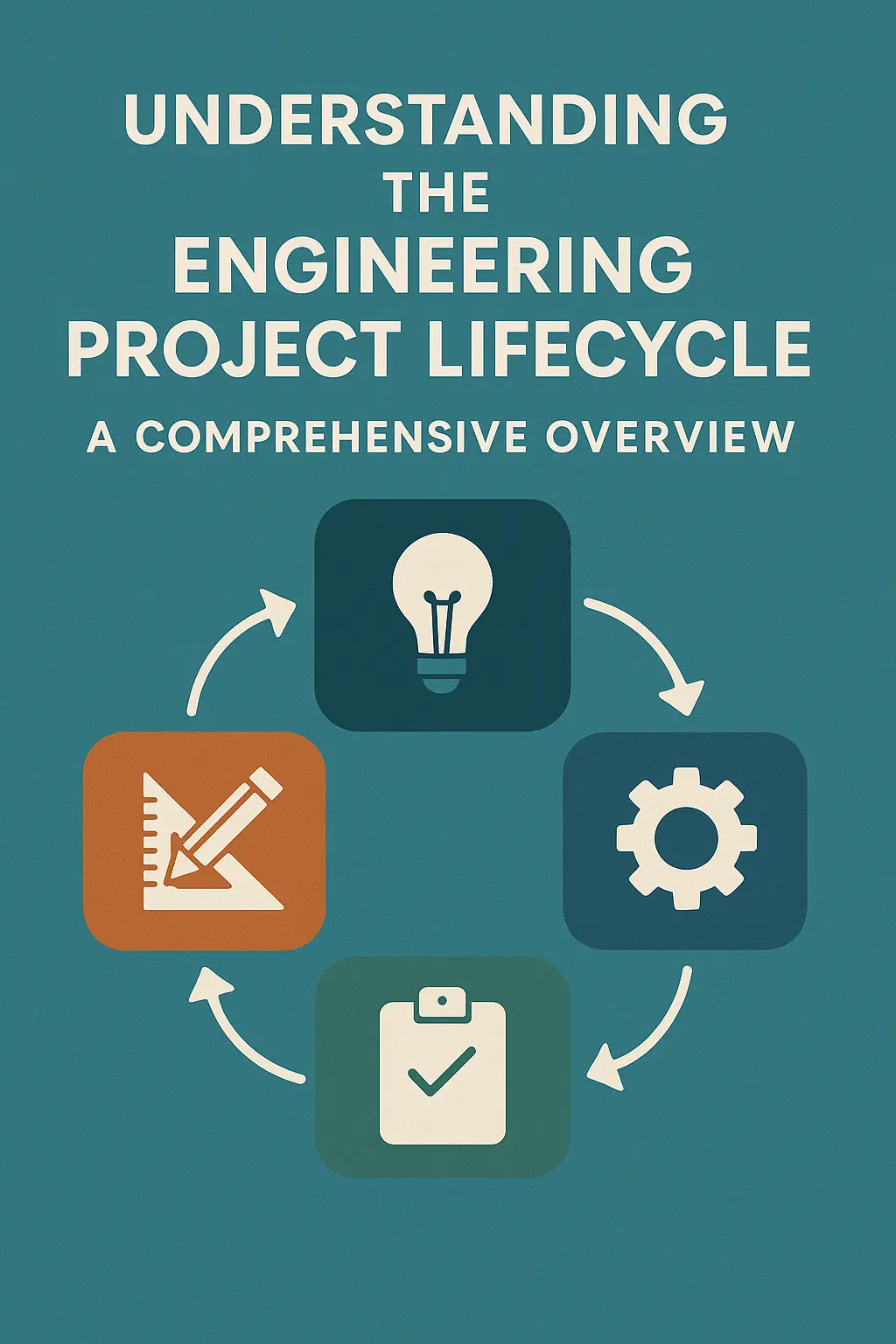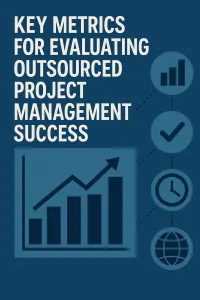Introduction
The role of an engineering project manager is pivotal to the success of any project. These professionals are responsible for overseeing the entire project lifecycle, which encompasses everything from initial planning to final execution and closure. Their expertise lies in crafting project timelines, estimating task durations, and ensuring adherence to budgets, all while maintaining a holistic view of the project and its intended outcomes. This strategic oversight enables them to effectively address and resolve challenges that may arise throughout the project [1][4].
Understanding the engineering project lifecycle is crucial for both seasoned project managers and those new to the field. The lifecycle typically consists of five key stages: project initiation, project planning, project execution, monitoring and control, and project closing. Each stage plays a vital role in ensuring that the project meets its objectives and is delivered on time and within budget [3][4]. By grasping the intricacies of these stages, project managers can better navigate the complexities of engineering projects, which often involve multifaceted workflows and various methodologies, such as agile or waterfall approaches [2][10].
A structured approach to managing engineering projects offers numerous benefits. It not only enhances collaboration among team members but also fosters clear communication regarding project goals, scope, and expectations. This clarity helps to mitigate risks, such as scope creep, and ensures that all stakeholders are aligned and working towards a common objective [11][13]. Furthermore, a well-defined project lifecycle allows for effective monitoring and control, enabling project managers to make informed decisions and adjustments as needed, ultimately leading to successful project outcomes [10][15].
The role of an engineering project manager is integral to navigating the complexities of the engineering project lifecycle. By understanding the stages involved and adopting a structured approach, project managers can significantly improve their chances of delivering successful projects that meet both client expectations and industry standards.
Stage 1: Project Initiation
The project initiation phase is a critical starting point in the engineering project lifecycle, where the groundwork for the entire project is laid. This stage involves several key activities that help define the project’s feasibility, objectives, and overall direction. Here’s a detailed breakdown of the essential components of this phase:
- Identify Stakeholders and Gather Requirements: The first step in project initiation is to identify all relevant stakeholders, including clients, team members, and any other parties who will be affected by the project. Engaging these stakeholders early on is crucial for understanding their needs and expectations. Gathering requirements through interviews, surveys, and workshops ensures that the project aligns with stakeholder interests and sets a solid foundation for future planning [2][10].
- Conduct Feasibility Studies and Risk Assessments: Once stakeholders are identified, conducting feasibility studies is essential to evaluate whether the project is viable. This includes analyzing technical, economic, legal, operational, and scheduling aspects to determine if the project can be successfully executed. Additionally, risk assessments should be performed to identify potential challenges and obstacles that could impact the project. Understanding these risks early allows for better planning and mitigation strategies [5][14].
- Establish Project Goals and Objectives: Defining clear project goals and objectives is vital for guiding the project team and measuring success. Goals should be specific, measurable, achievable, relevant, and time-bound (SMART). This clarity helps ensure that all team members are aligned and working towards the same outcomes, which is essential for maintaining focus throughout the project lifecycle [6][10].
- Develop a Project Charter: The project charter serves as a formal document that encapsulates all key details of the project, including its purpose, scope, objectives, and stakeholders. It acts as a reference point throughout the project and is crucial for securing approval from stakeholders. The charter should outline the project’s vision, initial budget, timeline, and methodology, providing a comprehensive overview that guides the project team in subsequent phases [11][15].
The project initiation phase is foundational to the success of any engineering project. By effectively identifying stakeholders, conducting thorough feasibility studies, establishing clear goals, and developing a robust project charter, project managers can set the stage for a successful project execution. This phase not only helps in aligning the project with organizational objectives but also increases the likelihood of achieving desired outcomes.
Stage 2: Project Planning
The project planning phase is a critical component of the engineering project lifecycle, as it lays the groundwork for successful execution. This stage involves creating a comprehensive roadmap that outlines how the project will be carried out, ensuring that all aspects are meticulously considered. Here are the key elements involved in this phase:
- Create a Detailed Project Plan: The project plan serves as the blueprint for the entire project. It should include:
- Scope: Clearly define what the project will deliver and what is outside its boundaries. This helps in managing expectations and avoiding scope creep.
- Timeline: Establish a realistic schedule that outlines when each phase of the project will be completed. This includes setting milestones to track progress.
- Budget: Develop a detailed budget that accounts for all costs associated with the project, including resources, materials, and contingencies. This financial plan is essential for ensuring that the project remains within its financial limits [3][14].
- Develop a Work Breakdown Structure (WBS): A WBS is a hierarchical decomposition of the project into smaller, more manageable components. This structure helps in organizing tasks and ensuring that all aspects of the project are covered. By breaking down the project into specific deliverables and tasks, project managers can better allocate resources and track progress [11][14].
- Assign Roles and Responsibilities: Clearly defining roles and responsibilities is crucial for effective teamwork. Each team member should understand their specific tasks and how they contribute to the overall project goals. This clarity helps in fostering accountability and ensuring that everyone is aligned with the project objectives [9][12].
- Plan for Risk Management and Mitigation Strategies: Identifying potential risks early in the planning phase allows project managers to develop strategies to mitigate them. This includes creating a risk management plan that outlines common risks, their potential impact, and the steps that will be taken to address them. Scenario planning can also be beneficial, as it prepares the team for various outcomes and helps in making informed decisions [2][10].
The planning phase is where engineering project managers set the stage for success by creating a detailed project plan, developing a WBS, assigning roles, and planning for risks. This thorough preparation is essential for navigating the complexities of engineering projects and ensuring that they are completed on time and within budget.
Stage 3: Project Execution
The execution phase is a critical stage in the engineering project lifecycle, where the plans developed during the earlier phases are put into action. This phase is often the longest and most resource-intensive, requiring careful coordination and management to ensure that the project meets its objectives. Here’s a breakdown of the key activities and considerations during the project execution phase:
- Coordinate Teams and Resources: Effective coordination among team members and resources is essential to kick off project work. Project managers must ensure that all team members understand their roles and responsibilities, and that resources are allocated efficiently. This involves not only assembling the right team but also ensuring that they have the necessary tools and materials to begin their tasks [1][5].
- Implement Project Management Methodologies: Depending on the nature of the project, different project management methodologies may be employed. For instance, Agile methodologies allow for flexibility and iterative progress, which can be beneficial in dynamic environments. Conversely, the Waterfall model may be more suitable for projects with well-defined stages and deliverables. The choice of methodology impacts how the project is executed and how teams collaborate [1][12].
- Maintain Communication with Stakeholders: Open and ongoing communication with stakeholders is paramount during the execution phase. Project managers should provide regular updates on progress, challenges, and changes to the project plan. This transparency helps to manage expectations and fosters trust among stakeholders, ensuring that everyone is aligned with the project’s goals and timelines [14][15].
- Monitor Progress and Adjust Plans as Necessary: Continuous monitoring of project progress is crucial to identify any deviations from the plan. Project managers should track key performance indicators and milestones to assess whether the project is on schedule and within budget. If issues arise, adjustments to the project plan may be necessary to address challenges and keep the project on track. This proactive approach helps mitigate risks and ensures that the project remains aligned with its objectives [2][10][14].
The execution phase is where the theoretical aspects of project management are transformed into tangible outcomes. By effectively coordinating teams, implementing suitable methodologies, maintaining stakeholder communication, and monitoring progress, engineering project managers can navigate this complex phase successfully, leading their projects to completion.
Stage 4: Project Monitoring and Controlling
The monitoring and controlling stage is crucial for ensuring that projects are delivered on time, within budget, and meet their intended objectives. This phase involves a systematic approach to tracking project performance and making necessary adjustments to keep the project aligned with its goals. Here are the key points to consider:
- Use Key Performance Indicators (KPIs) to Measure Project Progress: KPIs are essential metrics that help project managers assess the health of a project. By regularly reviewing these indicators, such as schedule variance, cost performance index, and quality metrics, engineering project managers can gain insights into how well the project is progressing and identify areas that may require attention or intervention [5][9].
- Implement Change Control Processes for Scope Adjustments: Engineering projects often encounter changes in scope due to evolving requirements or unforeseen challenges. Establishing a robust change control process allows project managers to evaluate the impact of these changes on the project’s timeline and budget. This ensures that any adjustments are made systematically and that all stakeholders are informed and aligned with the new direction [6][12].
- Manage Risks and Issues as They Arise: Proactive risk management is a cornerstone of successful project monitoring and controlling. Engineering project managers should continuously identify, assess, and mitigate risks throughout the project lifecycle. This involves not only addressing potential issues before they escalate but also having contingency plans in place to respond effectively when challenges do arise [7][12].
- Ensure Quality Assurance Throughout the Project: Maintaining high-quality standards is vital in engineering projects, where the implications of poor quality can be significant. Implementing quality assurance processes helps ensure that all project deliverables meet the required specifications and standards. Regular quality checks and audits can help identify defects early, allowing for timely corrections and minimizing the risk of costly rework [9][10].
The monitoring and controlling stage of an engineering project is not merely a reactive process; it is a proactive approach that involves continuous assessment and adjustment. By leveraging KPIs, managing scope changes, addressing risks, and ensuring quality, engineering project managers can navigate the complexities of their projects and drive them toward successful completion.
Stage 5: Project Closure
The project closure phase is a critical component of the engineering project lifecycle, marking the formal completion of all project activities. This stage ensures that the project meets its objectives and provides an opportunity for reflection and evaluation. Here’s a breakdown of the key activities involved in this final phase:
- Conduct Project Evaluations and Gather Stakeholder Feedback: This step involves assessing the project’s overall performance against its initial goals and objectives. Engaging stakeholders in this process is essential, as their feedback can provide valuable insights into the project’s success and areas for improvement. This evaluation helps validate whether the project fulfilled its intended purpose and meets the expectations of all parties involved [3][13].
- Document Lessons Learned and Best Practices: Capturing lessons learned is vital for continuous improvement in project management. This documentation should include both successes and challenges faced during the project. By analyzing what worked well and what did not, project managers can develop best practices that can be applied to future projects, thereby enhancing efficiency and effectiveness [6][15].
- Finalize Project Deliverables and Ensure Client Satisfaction: In this phase, all project deliverables must be completed and formally handed over to the client. It is crucial to ensure that these deliverables meet the agreed-upon specifications and quality standards. Client satisfaction is paramount, and project managers should confirm that the client is satisfied with the final outcomes before officially closing the project [1][10].
- Close Out Contracts and Release Project Resources: The closure phase also involves finalizing any outstanding contracts and ensuring that all financial obligations are settled. This includes closing out contracts with vendors and subcontractors. Additionally, project resources, including team members and equipment, should be released and reassigned to new projects as necessary. This step is essential for maintaining organizational efficiency and preparing for future endeavors [8][12].
The project closure phase is not merely a formality; it is a comprehensive process that ensures all aspects of the project are completed, evaluated, and documented. By effectively managing this stage, engineering project managers can enhance their team’s performance and contribute to the success of future projects.
Conclusion
Understanding the project lifecycle is crucial for ensuring successful project delivery. Each stage of the lifecycle—initiation, planning, execution, monitoring and control, and closure—plays a vital role in shaping the overall outcome of the project.
- Importance of Each Stage: Each phase is interconnected, and the effectiveness of one stage can significantly impact the others. For instance, thorough project initiation lays a solid foundation for planning, while diligent monitoring and control ensure that the project remains on track during execution. Recognizing the significance of these stages allows project managers to mitigate risks and enhance project success rates [3][10].
- Ongoing Learning and Adaptation: The field of project management is dynamic, and engineering project managers must embrace continuous learning and adaptation. As new methodologies and technologies emerge, staying informed and flexible in applying different project management models—such as predictive or iterative approaches—can lead to improved efficiency and outcomes [10][14]. This adaptability is particularly important in engineering, where project requirements can be complex and ever-changing [13].
- Invitation for Shared Experiences: Engaging with peers can foster a collaborative environment where best practices are exchanged, and innovative solutions are developed. By learning from one another, engineering project managers can enhance their skills and contribute to the collective knowledge of the field [12][15].
A comprehensive understanding of the engineering project lifecycle, coupled with a commitment to ongoing learning and community engagement, will empower project managers to navigate the complexities of their roles effectively.
Find out more about Shaun Stoltz https://www.shaunstoltz.com/about/.
This post was written by an AI and reviewed/edited by a human.



